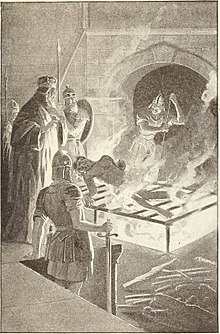اضطهاد الرومان للمسيحيين الأوائل
Persecution of early Christians
ينقل ( سلامة موسى ) في كتابه ( مصر أصل الحضارة ) عن ( إليوت سميث ) انه كان ذات مرة يفحص عن القحوف البشرية في إنجلترا ، وكان أمامه قحف لرأس مصري من عهد الفراعنة فوضعه مصادفة الى جنب رأس إنجليزي حديث الوفاة ، فما راعه إِلَّا المشابهة بل المطابقة بين الاثنين .

ويذهب سلامة موسى لتفسير ذلك بانتماء الرأسين للشعوب الميديترانية المتوسطية . لكن ما يهمّني انّ أوربا أخذت عن مصر الفرعونية قسوتها على العقائد التوحيدية ، اكثر من اخذها شكلاً خارجياً لكائن ما .

يستدلّ بعض الباحثين بوصف ( تاسيتوس ) للديانة اليهودية بنحو سلبي ، لإثبات عجز الرومان عن فهم جوهر عقيدة التوحيد . فيما كان انتهاك الضبّاط الرومان لمقدسات اليهود أمراً معتاداً ، رغم احترامهم لمعابد الوثنيين ، لكنهم في مرحلة التحالف مع يهود السنهدرين اخذوا يبنون معابد اوثانهم الى جنب المعابد اليهودية .

لقد ذكرت بعض المصادر انّ ( نيرون ) الصق تهمة احراق ( روما ) بالمسيحيين ايضا ، ربما لأنهم كانوا في هذا المرحلة المتقدمة من تاريخهم ( ٦٤ م ) جزءاً من المنظومة التوحيدية اليهودية ، التي كانت متهمة – لما يمتلك بعض كهنتها من تاريخ تآمري – بتدبير الكثير من الحوادث المشابهة ، لا أقلّ من قتلهم الأنبياء . وربما كان كهنة اليهود – ذوو العلاقة المميزة مع الوثنية الرومانية – هم من افتعل هذه الأحداث لإيقاع الضرر على المسيحيين الذين يشكّلون خطراً كبيراً على الوثنية اليهودية الجديدة .
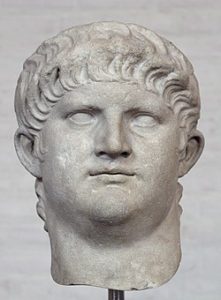
انّ الأحداث التي اعقبت حريق روما شهدت ما يشبه الإبادة للمسيحيين في روما ، حيث حكم بالموت على اعداد ضخمة منهم ، بأبشع الوسائل ، فصُلب بعضهم ، ولُفّ بعض اخر في جلود الحيوانات ، وتمّ القامه للكلاب المسعورة في المسرح الروماني ، فيما بلغت الوحشية ذروتها عندما تمّ طلي المسيحيين بالقار والزيت وإشعالهم في حدائق روما ليلا .
اما ( دوميتيان ) فقد اعتبر اعتناق المسيحية جرما ، وحكم على المسيحيين بالموت ، ومنهم قريبه القنصل ( فلافيوس كليمنس ) ، وصادر أموال بعضهم ، ووسّع اضطهاد كنائس اسيا الصغرى ، فيما ألقى القديس ( يوحنا الانجيلي ) في زيت مغلي في روما .
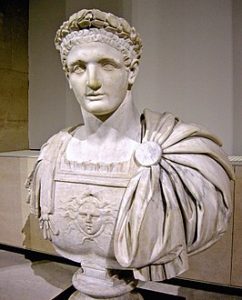
واعتبر الإمبراطور ( تراجان ) المسيحية ديانة محرّمة ، واعتبر تجمعاتها من التجمعات السرية الممنوعة قانونا ، وقد استغلّ اليهود هذه التشريعات في عهده ، فاتّهموا ( سمعان ) اسقف أورشليم ، فحُكم عليه بالصلب وهو في سن المائة والعشرين . وكذلك تمّ الفعل بأسقف إنطاكية ( إغناطيوس ) ، فاُرسل الى روما وألقي الى الوحوش الضارية .
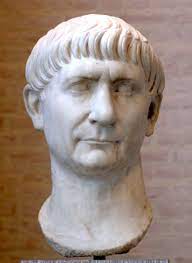
ورغم انّ التمييز بين الجماعتين – اليهودية والمسيحية – صار معتاداً بحدود عام ١٥٠ م إِلَّا انّ الاضطهاد الروماني للمسيحيين استمرّ وبقوة ، فرضاً للديانة الرومانية ، التي لم يتم فرضها سابقاً على اليهود بهذه الكيفية ، بل كان الخلاف مع جزء من اليهودية ، في ظاهره سياسي ، فيما كانت روما تتعامل مع يهود السنهدرين بايجابية . وقد كانت أوامر روما تقضي بضرورة احترام المسيحيين للآلهة الحارسة للإمبراطورية ، وتقديم القرابين للأصنام ، كما يجب الاعتقاد بعبادة الإمبراطور ذاته .
وحتى على مستوى إمبراطور فيلسوف ومثقف مثل ( اوريليوس ) لم تكن المواجهة لتخفّ ، بل انتقلت من التجريم القانوني للمسيحية الى تجريم وجودها فلسفيا ، فهدّد من يُخَوِّف النَّاسَ من الله بالنفي . وفي عهده – الذي انتشرت فيه الكوارث الطبيعية ضمن رقعة الامبراطورية – تمّ إرجاع ذلك الى ذنوب المسيحيين واسائتهم للآلهة الرومانية ، لذلك تمّت محاصرتهم اجتماعيا وسياسيا . وكانت هناك عمليات اضطهاد واسعة في ليون ١٧٧ م .
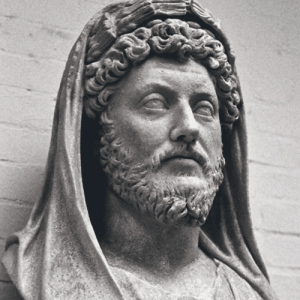
وفي عهد ( سبتميوس ساويرس ) نجد التناقض الذي يكشف عن وجود نوعين من المسيحية ، كالنوعين الذين انقسمت لهما اليهودية من قبل ، حيث رغم وجود بعض المسيحيين في بلاط هذا الإمبراطور كطبيبه ( بروكولس ) ، إِلَّا انه اصدر مرسوماً يمنع المسيحيين من الدعوة الى دينهم والتبشير بما جاء فيه ، فتعرّض المسيحيون في مصر وشمال افريقيا على اثر ذلك الى مذابح عديدة ، لا سيما في قرطاجة ٢٠٣ م .
امّا ( مكسيميانوس ) الذي سمح للشعب في المشاركة باضطهاد المسيحيين ، فقد وجّه غضبه نحو الأساقفة الكبار ، حتى انّ معاملته مع المسيحيين وصفت بالبربرية القاسية .

فيما قرّر ( ديسيوس ) عام ٢٥٠ م انّ من يكتفي باسم المسيحي ولا يقدّم الأضحية للآلهة الصنمية يتعرّض للملاحقة ، وهو القانون الذي أعاد ( فاليريانوس ) تأكيده عام ٢٥٧ م . وقد كانت عمليات إعدام المؤمنين المسيحيين تؤخِّر فرص الوصول الى اتفاق . حيث أراد ( ديسيوس ) اعادة الديانة الامبراطورية القديمة ، فاستغلّ حكّام الأقاليم هذا المرسوم وصاروا يذيقون المسيحيين أشدّ انواع التنكيل والعذاب ، حتى ضعف بعضهم وقدّم القرابين للآلهة الوثنية ، لكنّ الكثيرين فضّلوا السجن او الموت على ذلك ، ومن هؤلاء مرقوريوس و فابيانوس الروماني وبابيلاس الأنطاكي وإسكندر الأورشليمي .
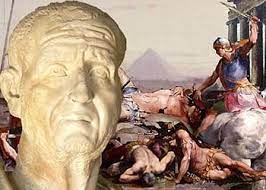
فيما كان عهد ( فاليريانوس ) متناقضاً كعهد ( سبتميوس ساويرس ) ، حيث تضمّن بلاطه مجموعة من المسيحيين إِلَّا انه اصدر قرارات اجرامية ضدّ العموم المسيحي ، وقرّر إعدام كبار رجال الدين المسيحيين ، ومصادرة املاك الأغنياء وألقاب الفرسان والنبلاء منهم ، فيما تسلب أموال النساء المتزوجات ويتم نفسهن ، والصغار يتم أخذهم للعمل في ضياع الإمبراطور سخرة . وممن تمّ قتلهم في عهده ( سكستوس الثاني ) اسقف روما و ( كبريانوس ) اسقف قرطاجة .
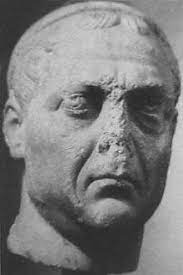
وحين جاء ( اوريليان ) اصدر اوامره بقتل المسيحيين من جديد ، رغم فترة الهدوء البسيطة نسبياً قبله . وقد خلفه مجموعة من الاباطرة كانت فترتهم هادئة قياساً الى عهده حتى مجيء ( ديوقليديانوس ) .
لقد دخلت المسيحية في صراع غير متكافئ ماديّاً مع الوثنية العتيقة للرومان ، وقد كانت صور الموت منتشرة ومعتادة بين المسيحيين المؤمنين ، والذين دخلوا في عصر الشهادة ، ليواجهوا هذا الطغيان الكبير .
يقول اسقف الغربية الانبا ( يؤانس ) في بحثه ( الاستشهاد في المسيحية ) : (( كانت الوثنية هي العدو الأكبر الذي تصدى للمسيحية ، وقاومها مقاومة المستميت ، وحاربها حرب الإبادة ، حرب الحياة او الموت . ولا يسجّل التاريخ صداماً أقوى وأطول وأكثر وحشية من ذلك الصراع الذي احتدم بين روما الامبراطورية الوثنية بآلهتها واباطرتها وجحافلها ، وبين المسيحية التي ظهرت على مسرح العالم بلا سند من قوة زمنية ، وبلا سلاح حربي … )) .

ونظر الرومان للمسيحية على انها خرافة ، لا ديانة ، دنيئة لا تستحق ان ينظر اليها – بحسبهم – ، فواجهوا انتشارها باعتبارها محرّمة رسمياً . وحسب رواية ( ترتليانوس ) صار التعبير الموجّه للمسيحي هو (( لا حقّ لك في الوجود )) .
لم يكن المنطلق الديني بالمعنى الفلسفي هو وحده ما يبعث على التحريض وقمع المسيحية ، بل كان هناك الباعث النفعي المستغلّ للدين ، كما هي دوافع ( ديمتريوس ) الصائغ في ( افسس ) ، وايضاً دوافع تلك الساحرة في ( فيلبي ) ، حيث يشرح حاكم بيثينية ( بليني الصغير ) عام ١٠٠م في تقرير للإمبراطور كيف تسبب انتشار المسيحية وزيادة عدد معتنقيها في تقليل عدد التقدمات للآلهة ، وهو ما يعني انحسار سوق الذهب والبخور وغيرها ، كما هو انحسار شديد لعمل العرّافات والكهنة .
كان المسيحي مكشوفاً للسلطة ، حيث يعاني الانفصال عن لغة المجتمع الوثنية ، وسوقه الوثني ، وأعياده الوثنية ، وأسرته الوثنية ، وطقوسه الجماعية الوثنية ، لذلك كان يعاني في كل نَفَس وفي كل خطوة .
ومن القصص التي يوردها ( يوسابيوس ) تلك التي تحكي استشهاد الضابط ( مارينوس ) في قيصرية ، حيث دُعيَ للترقية الى رتبة قائد مائة ، لكنّ زميلاً له طعن فيه ، واتهمه بالمسيحية ، فأعطى القاضي لمارينوس ثلاث ساعات ليختار بين الإنجيل والسيف ، فاختار الإنجيل ، وقضى شهيدا .
وفي مرحلة تاريخية متأخرة بحدود ٣٠٦ م كانت كافية لإدراك المعاني الفلسفية والمعرفية والروحية للمسيحية زار الإمبراطور ( ماكسميانوس ) قيصرية ، في ذكرى ميلاده ، وفي عادة هؤلاء الاباطرة الوحشية والسادية والدينية في نفس الوقت قرّر تقديم اضحيات بشرية تبتلعها الحيوانات المفترسة ، فجاء باثنين ، احدهما مسيحي هو ( اغابيوس ) ، والآخر مجرم وثني قاتل ، لكنّه اطلق سراح القاتل ، وعرّض المسيحي للاستهزاء في العامَّة ، ثمّ القاه الى أنثى دب جائعة ، ولمّا لم يمت القاه في البحر .
وقد وصل الامر في ليون وفيينا الى منع المسيحيين من الدخول الى الاسواق والحمامات العامة ، وذلك في عهد ( اوريليوس ) ، من خلال تحريض العامَّة من الوثنيين وترك الامر اليهم ، حتى انّ الجمهور أخذ يعذّب المسيحيين ويقتلهم ، ومن ثمّ ألقى جثثهم في نهر الرون . فيما كانت بيوت بعض المسيحيين تتعرض للسرقة والحرق .
وفي احدى المحاكمات الغريبة لرجل دين مسيحي في ازمير يُدعى ( بوليكاربوس ) كان القاضي يصادق على رغبات الجمهور الوثني كاحكام قانونية ، وحين دعوا لحرق الرجل اقرّ القاضي ذلك ، فجمعوا الحطب استعداداً لذلك في الحال .
قام الرومان باضطهاد المسيحيين في مصر ، باعتبارهم خطراً يهدد سلامة الدولة ، لعدم مشاركتهم في إقامة الشعائر وتقديس تماثيل الاباطرة . وقد بدأ اضطهادهم في مصر بطريقة منتظمة خلال حكم ( سبتميوس سفروس ) بحدود ١٩٣ – ٢١١ م ، وبلغ اشدّه في أواخر عصر ( دقلديانوس ) في حدود ٢٨٤ – ٣٠٥ م ، وهو ما تسمّيه الكنيسة ( عصر الشهداء ) .
انّ القراءة المسيحية المعاصرة لفترة الاضطهاد الأكبر والأبشع والاقسى في تاريخ المسيحية خلال عهد ( دقلديانوس ) ليست قائمة على منطق عقلي فاحص . انها قراءة ترى فترتين من التسامح والاضطهاد ، من تغيّر المواقف السياسية ، من الاختلاف بين الشرق والغرب صدفوية ، لكنّ الامر ليس كذلك .
انّ ( دقلديانوس ) خرج بأمر إهلاك المسيحية من داخل الغرفة المقدسة في المعبد ، وهو الرجل الذي كان يشغل المسيحيون الكثير من الوظائف داخل قصره ، فيما كان صهره ( جالريوس ) وثنياً متعصباً ، وهو زوج ( فالريا ) ابنة الإمبراطور التي كان البعض يراها مسيحية ، وكذلك أمها ( بريسكا ) ! . انّ هذه الشبكة التي احرقت المسيحيين لاحقاً لم تكن يوماً لتؤمن بالمسيحية أبدا ، لكنها بدأت مشروعاً جديدا ، حين وصلت بالمسيحيين الى ما وصلت اليه الفرعونية باليهود ، حينما جعلت منهم قسماً يهوداً وثنيين ، يقودهم كهنوت الظلام في السنهدرين ، كذلك أصبحت المسيحية على قسمين ، نتج احدهما عن كهنوت الظلام الجديد الذي اخلفه ( بولص ) .
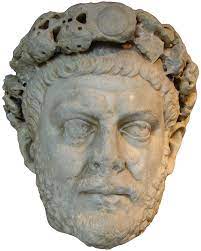
انّ هذا المشروع يقتضي إبادة كل الجماعات المسيحية التي لا تزال توّحد الله ، والإبقاء على الجماعات البولصية ، التي ستتعبّد بالديانة الرومانية الجديدة ، وهي القائمة على الوثنية البولصية ، التي يمكن ان نسمّيها النسخة المحدِّثة عن الديانة الرومانية القديمة ، والتي هي أيضاً كانت نسخة محدثة عن الديانة الفرعونية القديمة .
لذلك كانت قسوة المشروع الخبيث هذا تصب جام غضبها على المسيحيين الشرقيين الموحدين ، وتلك الشعوب التي ترتكز الى فلسفة التوحيد الإبراهيمية ، فيما الجماعات المسيحية في الغرب التي ترتكز الى أصل وثني تمّ تلويثه بالبولصية الوثنية فتمّ الإبقاء عليها ، لتكون الارضيّة المستقبلية لانطلاق المسيحية الرومانية .
وسواءً كان ما نقله ( شاف ) عن لسان الكاهن وهو حرم الآلهة مخاطباً الإمبراطور – الذي يرافقه خدمته من المسيحيين – (( انّ الآلهة لا تتكلم في حضرة اعدائها )) ، قاصداً أولاء المسيحيين ، او ما نقله ( لكتانتيويس ) من تأثير صهر الإمبراطور ( جالريوس ) الوثني المتعصب المتعطش للدماء ، من أسباب لثورة ( دقلديانوس ) الأعنف ضد المسيحيين ، فذلك لا يبرِّر قسوتها ومنهجيتها وتخطيطها العالي . انّ السببين الذين تمّ ذكرهما آنفاً كانا عاملين ساعدا في تحقيق الرغبة الوثنية الوحشية للإمبراطورية ، والمنسقة بإتقان ، لابادة مسيحيي الشرق ، والإبقاء على المسيحية البولصية ( الكاثوليكية ) في الغرب . اذ لا يستطيع كاهن ما التحدث باسم الآلهة بحضور الإمبراطور ، والذي هو الكاهن الأعظم وابن الآلهة ، فضلاً عن اخباره بامتناعها عن الكلام ، وليس الإمبراطور ساذجاً وهو يرث هذا العرش الضخم ليكون تحت تأثير ( جالريوس ) زوجة ابنته ، التي يُفترض انها مسيحية ! . انّ هذه العمليات كانت مخاضاً اوليّاً لولادة ديانة جديدة ، سرقوا لها عنوانا ، وتبع ذلك مجموعة مخاضات لاحقاً في عموم أوربا ، لتبدأ سلسلة من الأفكار والجماعات والهوس ، حتى الوصول للقرن الأخير المعاصر ، كل ذلك بخدعة قديمة ، تمّ تطبيقها لأوّل مرة من قبل الحضارة القابيلية الاولى .
اصدر ( دقلديانوس ) مرسوماً عام ٣٠٣ م يقضي بهدم الكنائس وحرق الكتب المقدسة وطرد ذوي المناصب الرفيعة وحرمانهم من الحقوق المدنية وحرمان العبيد من الحرية إِنْ اصرّوا على المسيحية . فيما نصّ المرسوم على عقوبة لم يحدد ماهيتها .
لقد بدأ تنفيذ المرسوم مباشرة في عيد ( الانتهاء ) ، بعد ان تمّ تعليق منشور المرسوم على جدران القصر الإمبراطوري ذاته ، لذلك كانت كنيسة ( نيقوميدية ) القريبة منه اوّل ضحايا قرار الهدم هذا ، لتسري هستيريا القتل والهدم في جميع الأقاليم .
وفي خطة جديدة قديمة أيضاً قام شخص ما بإحراق اجزاء من قصر الإمبراطور ، وبالتالي اتهام المسيحيين بتهمة محاولة حرق الإمبراطور وصهره احياء ، فانفجر العنف والقتل والحرق ضد المسيحيين كبركان . وهو الحريق الذي نسبه ( قنسطنطين ) للإضاءة لاحقا ، بعد استتباب الأمور للمسيحية البولصية ، لتبرير إعلانها ديناً إمبراطوريا ، رغم اتهامها بالإجرام سابقا .
وأصدر ( دقلديانوس ) مرسومين اخرين ، يقضيان بسجن جميع شيوخ الكنائس ، وتعريضهم للتعذيب ، بقصد إجبارهم على ترك الإيمان بالمسيحية .
اما الخطة التي انتهجها ( دقلديانوس ) لاصدار أوامر امبراطورية يتم تطبيقها في اقليم دون اقليم اخر ، وكذلك تمكّن الامبراطورية من الإشراف المباشر والسريع على إبادة المسيحيين ، فكانت بتقسيم الامبراطورية الى أربعة أقاليم ، تخضع لروما مركزيا ، لكنها تحت حكم حاكم برتبة ( إمبراطور ) . فكان ( دقلديانوس ) حاكماً على الشرق في اسيا ومصر وتراقيا ، وجعل مقرّه في ( نيقوميدية ) ، وكما هو واضح فالشرق مهد المسيحية ومصدر قوتها الفكرية والبشرية ، ومن ثمّ ( جالريوس ) الذي حكم الدانوب لبعض الوقت ، لكنّ الحاجة لسرعة الإبادة جعلت ( دقلديانوس ) يستدعيه الى الشرق ، و ( مكسميانوس هركوليوس ) على إيطاليا وإفريقيا ، و ( قنسطنطينوس كلوروس ) على ( غاليا ) التي هي فرنسا حالياً بما يتبعها من أقاليم ، وهو والد ( قنسطنطين الكبير ) الذي اقرّ المسيحية كدين رسمي لاحقا .
وقد اصدر ( مكسميانوس هركوليوس ) قراراً امبراطورياً أيضاً يقضي بإرغام جميع المسيحيين في المدن والقرى على التضحية للآلهة .
لكنّ ملامح تلك المؤامرة الكبرى ضد الشرق المسيحي الموحد والفيلسوف تكشّفت عندما اختار ( دقلديانوس ) قبيل استقالته عام ٣٠٥ م ( مكسميانوس دازا ) قيصراً ، وأطلق يده في سوريا ومصر ، وهو ابن اخي المتشدد الوثني ( جالريوس ) . ولمعرفة شخصية ( دازا ) هذه يكفي ان نعرف انه اصدر مرسوماً يقضي بإعادة بناء مذابح الأوثان ، وان يقدم الرجال والنساء والأولاد وحتى الرضّع الذبائح والتقدمات للآلهة ، وتذوّق تلك التقدمات بالاكراه ، وتدنيس الأطعمة التي تباع في الاسواق بسكائب الذبائح تلك ، ووقوف الحرّاس امام الحمامات العامة لتدنيس من يدخل اليها للاغتسال . وفي عام ٣١١ م امر ( دازا ) ببناء الهياكل في كل مدينة وإعادة الأحراش الوثنية المقدسة التي ازيلت سابقا ، وعيّن كهنة الأصنام ، وجعل عليهم في كل مقاطعة رئيساً ، ومنح جميع السحرة وظائف ادارية ، وأمر لهم بامتيازات خاصة .
وكما هو مكشوف فقد اقتصر الاضطهاد العام تحت قيادة ( دقلديانوس ) على الفترة ( ٣٠٣ – ٣٠٥ ) ، لكنّه في الشرق الذي يديره ( جالريوس ) و ( دازا ) استمر لفترة طويلة ( ٣٠٣ – ٣١١ ) ، فيما كانت اقسى فتراته التي اقتصرت على الشرق خلال ( ٣٠٨ – ٣١١ ) م .
وفيما تصف الكنيسة المعاصرة – بسذاجة – القيصر ( قنسطنطين كلوروس ) بالعطوف على المسيحيين في الغرب ، وتُرجِع لابنه ( قنسطنطين ) الفضل في الاعتراف بالمسيحية والتسامح الديني ، تفوتها تلك المؤامرة على مسيحية الشرق الموحدة ، ضمن لعبة لإنعاش القابيلية الفرعونية الرومانية ، تحت راية المسيحية ، بعد ادراك الرومان قوّة هذه الديانة ، وشريانها في المجتمع العالمي رغماً عنهم .


****
Roman persecution of early Christians
Salama Musa narrates in his book (Egypt is the Origin of Civilization) on the authority of (Elliott Smith) that he was once examining human craniums in England, and he had in front of him the cranium of an Egyptian head from the era of the Pharaohs, so he accidentally placed it next to the head of a newly deceased Englishman. matching between the two.
Salama Musa goes on to explain that the two heads belong to the Mediterranean peoples . But what concerns me is that Europe took away from Pharaonic Egypt its cruelty to monotheistic beliefs, more than its taking the external form of a being.
Some researchers infer Tacitus’ description of the Jewish religion in a negative way, to prove the inability of the Romans to understand the essence of the doctrine of monotheism. While the Roman officers’ violation of the sanctities of the Jews was a regular thing, despite their respect for the temples of the pagans, but in the phase of alliance with the Sanhedrin Jews they started building temples of their idols next to the Jewish temples.
Some sources have mentioned that (Nero) attributed the charge of burning (Rome) to Christians as well, perhaps because they were in this advanced stage of their history (64 AD) part of the Jewish monotheistic system, which was accused – because some of its priests had a conspiratorial history – of plotting a lot Of similar incidents, no less than their killing of the prophets. Perhaps it was the priests of the Jews – who have a special relationship with Roman paganism – who fabricated these events to inflict harm on the Christians who posed a great danger to the new Jewish paganism.
The events that followed the fire of Rome witnessed what resembles the extermination of Christians in Rome, where huge numbers of them were sentenced to death, by the most horrific means, some of them were crucified, others were wrapped in animal skins, and they were raised to rabid dogs in the Roman theater, while the brutality reached its climax when they were painted Christians with bitumen and oil and set them on fire in the gardens of Rome at night.
As for ( Domitian ), he considered embracing Christianity a crime, and condemned Christians to death, including his cousin, the consul ( Flavius Clemens), confiscating the money of some of them, and expanding the persecution of the churches of Asia Minor, while St. (John the Evangelist) was thrown into boiling oil in Rome.
The Emperor (Trajan) considered Christianity a forbidden religion, and considered its secret gatherings prohibited by law, and the Jews took advantage of these legislation during his reign, and accused (Simon) Bishop of Jerusalem, so he was sentenced to crucifixion at the age of one hundred and twenty. The same was done by the Bishop of Antioch ( Ignatius ), who was sent to Rome and thrown to the fierce beasts.
Although the distinction between the two groups – Judaism and Christianity – became common around the year 150 AD, the Roman persecution of Christians continued with force, an imposition of the Roman religion, which had not previously been imposed on the Jews in this way. Rome was dealing with the Jews of the Sanhedrin positively . The orders of Rome required that Christians should respect the guardian gods of the empire, and make sacrifices to idols, and it was necessary to believe in the worship of the emperor himself.
Even at the level of an emperor, a philosopher and an intellectual like Aurelius, the confrontation was not to ease, but rather moved from the legal criminalization of Christianity to the criminalization of its philosophical existence, threatening those who fear God with exile. During his reign – during which natural disasters spread within the empire – this was attributed to the sins of the Christians and their abuse of the Roman gods, so they were besieged socially and politically. There were widespread persecutions in Lyon in 177 AD.
In the era of ( Septimius Severus), we find the contradiction that reveals the existence of two types of Christianity, such as the two types into which Judaism was divided before, as although there were some Christians in the court of this emperor as his physician ( Proculus ), he issued a decree prohibiting Christians from calling for their religion and preaching what As a result, Christians in Egypt and North Africa were subjected to numerous massacres, especially in Carthage in 203 AD.
As for (Maximian), who allowed the people to participate in the persecution of Christians, he directed his anger towards the great bishops, to the extent that his treatment of Christians was described as cruel barbarism.
While Decius decided in 250 AD that whoever is satisfied with the name of the Christian and does not offer the sacrifice to the idolatrous gods will be persecuted, a law that ( Valerian ) reaffirmed in the year 257 AD. The executions of Christian believers were delaying the chances of reaching an agreement. Where (Decius) wanted to restore the ancient imperial religion, so the rulers of the provinces took advantage of this decree and began to subject the Christians to the most severe forms of abuse and torment, until some of them weakened and offered sacrifices to the pagan gods, but many preferred imprisonment or death over that, and among them were Mercurius , Fabianus the Roman, Babylon of Antioch and Alexander of Jerusalem. .
While the reign of ( Valerian ) was contradictory as that of ( Septimius Severus), where his court included a group of Christians, but he issued criminal decisions against the Christian public, and decided to execute senior Christian clergy, confiscate the property of the rich and the titles of knights and nobles from them, while robbing married women’s money and perfecting themselves And the young ones are taken to work in the emperor’s estate as forced labor. Among those who were killed during his reign were ( Sixtus II), bishop of Rome, and ( Cyprian ), bishop of Carthage.
And when ( Aurelian ) came, he issued his orders to kill the Christians again, despite the relatively simple period of calm before him. He was succeeded by a group of emperors whose period was calm compared to his reign until the advent of Diocletian .
Christianity entered into a materially unequal conflict with the ancient paganism of the Romans, and images of death were widespread and usual among the faithful Christians, who entered the era of martyrdom, to face this great tyranny.
Bishop of Gharbia Anba (Youannis) says in his research (Martyrdom in Christianity): “Paganism was the greatest enemy that confronted Christianity, and the resistance of the desperate fought against it, and the war of annihilation, the war of life or death. History does not record a stronger, longer and more brutal clash than that conflict. Which raged between Rome, the pagan empire with its gods, emperors and legions, and Christianity, which appeared on the world stage without the support of a temporal force, and without a weapon of war…)).
The Romans viewed Christianity as a superstition, not a vile religion that does not deserve to be considered – according to them – so they faced its spread as being officially forbidden. According to Tertullian’s narration, the expression directed to the Christian became “You have no right to exist.”
It was not the religious point of view in the philosophical sense alone that motivated the incitement and suppression of Christianity, but there was the utilitarian motive that exploited religion, as were the motives of (Demetrius) the goldsmith in (Ephesians), and also the motives of that witch in (Philippians), where the ruler of Bithynia (Pliny ) explains Al-Sagheer) in the year 100AD in a report to the emperor, how the spread of Christianity and the increase in the number of its adherents reduced the number of offerings to the gods, which means a decline in the market for gold, incense, etc., as well as a severe decline in the work of fortune-tellers and priests.
The Christian was exposed to authority, suffering separation from the pagan language of society, its pagan market, its pagan festivals, its pagan family, and its pagan collective rituals, so he suffered in every breath and in every step.
Among the stories that Eusebius mentions that tell of the martyrdom of the officer (Marinus) in Caesarea, where he was called for promotion to the rank of centurion, but a colleague of his stabbed him, accusing him of Christianity, so the judge gave Marinus three hours to choose between the Bible and the sword, so he chose the Bible, and he died as a martyr .
In a late historical stage, about 306 AD, it was sufficient to realize the philosophical, epistemological and spiritual meanings of Christianity. Emperor ( Maximian ) visited Caesarea, on the anniversary of his birth, and usually these brutal, sadistic and religious emperors at the same time decided to offer human sacrifices to be swallowed by predators, so he brought two, one of whom is a Christian ( Agabius ), and the other is a murderous pagan criminal, but he released the murderer, subjected the Christian to ridicule in the public, then threw him to a hungry bear, and when he did not die he threw him into the sea.
The matter reached in Lyon and Vienna to prevent Christians from entering markets and public baths, during the reign of (Aurelius), by inciting the common people from the pagans and leaving the matter to them, so that the public began to torture and kill Christians, and then threw their bodies into the Rhone River. While the homes of some Christians were subjected to theft and burning.
In one of the strange trials of a Christian clergyman in Izmir called ( Polycarpus ), the judge was confirming the wishes of the pagan public as legal provisions, and when they called for the man to be burned, the judge approved that, so they gathered firewood in preparation for that at once .
The Romans persecuted Christians in Egypt, considering them a threat to the integrity of the state, for not participating in performing rituals and venerating the statues of emperors. Their persecution in Egypt began on a regular basis during the rule of ( Septimius Severus ) in the range of 193-211 AD, and reached its most severe in the late Diocletian era, in the range of 284-305 AD, which is what the Church calls (the era of martyrs).
The contemporary Christian reading of the period of the greatest, most horrific and cruel persecution in the history of Christianity during the era of (Docletian) is not based on an exhaustive rationale. It is a reading that sees two periods of tolerance and persecution, a change in political attitudes, and a coincidental difference between East and West , but this is not the case.
Diocletian came out with the order to destroy Christianity from inside the holy room in the temple, and he is the man who occupied many jobs in his palace by Christians, while his son-in-law ( Galerius ) was a pagan fanatical, and he is the husband of (Valria), the daughter of the emperor, who some saw as a Christian, as well as Her mother ( Prisca )! . This network, which later burned Christians, would never have believed in Christianity, but it started a new project, when it reached the Christians to what the Pharaonic had reached with the Jews, when it made them a section of Jews and pagans, led by the dark priesthood in the Sanhedrin . Christianity also became in two parts, one of which resulted About the new dark priesthood that he (Paul) left behind.
This project requires the extermination of all Christian groups that still unite God, and the preservation of the Pauline groups , which will worship the new Roman religion, which is based on Pauline paganism , which we can call the updated version of the ancient Roman religion, which was also an updated version of the religion ancient pharaohs.
Therefore, the cruelty of this malicious project directed its anger against the monotheistic eastern Christians, and those peoples that were based on the Abrahamic monotheism philosophy, while the Christian groups in the West that were based on a pagan origin were polluted by pagan philosophy and were preserved, to be the future ground for the launch of Roman Christianity.
And whether what (Shaf) reported on the tongue of the priest, who excommunicated the gods, addressing the emperor – who was accompanied by his servants from Christians – ((that the gods do not speak in the presence of their enemies)), referring to the Christians, or what he transmitted ( Lactantius ) about the influence of the emperor’s son-in-law ( Galerius) The bloodthirsty, fanatical pagan is one of the reasons for the most violent revolt of (Docletian) against the Christians. The aforementioned two reasons were factors that helped realize the brutal pagan desire of the empire, perfectly orchestrated, to exterminate the Christians of the East, and to maintain Pauline Christianity in the West. As no priest can speak in the name of the gods in the presence of the emperor, who is the great priest and son of the gods, let alone tell him that she abstains from speaking . . These operations were the initial throes of the birth of a new religion, for which they stole an address, and this was followed by a group of pangs later in all of Europe, to start a series of ideas, groups and obsession, until reaching the last contemporary century, all with an old trick, which was applied for the first time by the first Qabilian civilization .
Diocletian issued a decree in 303 AD to demolish churches, burn holy books, expel high-ranking officials, deprive them of civil rights, and deprive slaves of freedom if they insist on Christianity. While the decree stipulated a penalty, it did not specify its nature.
The implementation of the decree began directly on the (end) feast, after the publication of the decree was hung on the walls of the Imperial Palace itself, so the ( Nicomedian ) Church near it was the first victim of this demolition decision, to spread the hysteria of murder and demolition in all regions.
And in an old new plan, someone also burned parts of the Emperor’s palace, and thus accused the Christians of trying to burn the Emperor and his son-in-law alive, so violence, killing and burning erupted against Christians as a volcano. It is the fire that Constantine attributed to lighting later, after matters were restored to the Pauline Christianity , to justify declaring it an imperial religion, despite its accusation of criminality previously.
Diocletian issued two other decrees, imprisoning all the elders of the churches, and exposing them to torture, with the intent of forcing them to leave the faith in Christianity.
As for the plan adopted by (Docletian) to issue imperial orders to be applied in a region without another region, as well as enabling the empire to directly and quickly supervise the extermination of Christians, it was by dividing the empire into four regions, subject to central Rome, but under the rule of a ruler with the rank of (emperor). Diocletian was the ruler of the East in Asia, Egypt and Thrace, and made his headquarters in ( Nicomedia ), and as it is clear that the East is the cradle of Christianity and the source of its intellectual and human strength, and then ( Galerius ) who ruled the Danube for some time, but the need for speed of extermination made (Diocletian) summon him To the east, and ( Maximianus Heraclius ) on Italy and Africa, and ( Constantinos Chlorus ) on (Gulia), which is present-day France with its provinces, and he is the father of ( Constantine the Great) who approved Christianity as an official religion later.
( Maximianus Hercules ) also issued an imperial decree to force all Christians in cities and villages to sacrifice to the gods.
But the features of that grand conspiracy against the united Christian East and the philosopher were revealed when ( Docletian ), before his resignation in 305 AD, chose ( Maximianus Daza ) as Caesar, and freed his hand in Syria and Egypt, and he is the nephew of the pagan fanatic ( Galerius ). To know the character of this Daza , it is sufficient to know that he decreed that the altars of idols be reconstructed, that men, women, children, and even infants offer sacrifices and offerings to the gods, that these offerings be tasted under duress , that the foods sold in the markets be desecrated with these sacrificial libations, and that guards stand before the public baths to desecrate Who enters it to wash. In the year 311 AD, ( Daza ) ordered the construction of temples in every city and the restoration of the sacred pagan forests that had previously been removed.
As is revealed, the general persecution under the leadership of (Diocletian) was limited to the period ( 303-305 ), but in the East run by ( Galerius ) and ( Daza ) it continued for a long period ( 303-311 ), while its harshest periods were confined to the East during (308 – 311) AD.
And while the contemporary church naively describes Caesar ( Constantine Chlorus ) as being kind to Christians in the West, and credits his son ( Constantine ) with the recognition of Christianity and religious tolerance, it misses this conspiracy against the unified Christianity of the East, as part of a game to revive Roman Pharaonic Qabilism , under the banner of Christianity, after The Romans realized the strength of this religion, and its artery in the world community against their will.
Note: Machine translation may be inaccurate
persécution romaine des premiers chrétiens
Salama Musa raconte dans son livre (L’Egypte est l’origine de la civilisation) sous l’autorité de (Elliott Smith) qu’il examinait autrefois des crânes humains en Angleterre, et qu’il avait devant lui le crâne d’une tête égyptienne de l’époque du Des pharaons, il l’a donc placé accidentellement à côté de la tête d’un Anglais récemment décédé.
Salama Musa poursuit en expliquant que les deux têtes appartiennent aux peuples méditerranéens. Mais ce qui m’inquiète, c’est que l’Europe a enlevé à l’Egypte pharaonique sa cruauté envers les croyances monothéistes, plus qu’elle ne lui a pris la forme extérieure d’un être.
Certains chercheurs déduisent la description de Tacite de la religion juive d’une manière négative, pour prouver l’incapacité des Romains à comprendre l’essence de la doctrine du monothéisme. Alors que la violation par les officiers romains du caractère sacré des Juifs était une chose régulière, malgré leur respect pour les temples des païens, mais dans la phase d’alliance avec les Juifs du Sanhédrin, ils ont commencé à construire des temples de leurs idoles à côté des temples juifs.
Certaines sources ont mentionné que (Néron) attribuait également l’accusation d’incendie (Rome) aux chrétiens, peut-être parce qu’ils faisaient partie à ce stade avancé de leur histoire (64 après JC) du système monothéiste juif, qui était accusé – parce que certains des ses prêtres avaient une histoire de conspiration – de comploter beaucoup d’incidents similaires, pas moins que leur meurtre des prophètes. Peut-être que ce sont les prêtres des Juifs – qui ont une relation particulière avec le paganisme romain – qui ont fabriqué ces événements pour infliger du mal aux chrétiens qui ont constitué un grand danger pour le nouveau paganisme juif.
Les événements qui ont suivi l’incendie de Rome ont été témoins de ce qui ressemble à l’extermination des chrétiens à Rome, où un grand nombre d’entre eux ont été condamnés à mort, par les moyens les plus horribles, certains d’entre eux ont été crucifiés, d’autres ont été enveloppés dans des peaux d’animaux, et ils ont été élevés à des chiens enragés dans le théâtre romain, tandis que la brutalité a atteint son paroxysme lorsqu’ils ont peint des chrétiens avec du bitume et de l’huile et les ont incendiés dans les jardins de Rome la nuit.
Quant à ( Domitien ), il considérait la conversion au christianisme comme un crime, et condamnait à mort les chrétiens, dont son cousin, le consul ( Flavius Clemens), confisquant l’argent de certains d’entre eux, et élargissant la persécution des églises d’Asie Mineure, tandis que saint Jean l’évangéliste était jeté dans l’huile bouillante à Rome.
L’empereur (Trajan) considérait le christianisme comme une religion interdite et considérait ses rassemblements secrets interdits par la loi, et les Juifs ont profité de cette législation pendant son règne et ont accusé (Simon) l’évêque de Jérusalem, il a donc été condamné à la crucifixion à l’âge de cent vingt. La même chose a été faite par l’évêque d’Antioche ( Ignace ), qui a été envoyé à Rome et jeté aux bêtes féroces.
Bien que la distinction entre les deux groupes – judaïsme et christianisme – soit devenue courante vers l’an 150 de notre ère, la persécution romaine des chrétiens s’est poursuivie avec force, une imposition de la religion romaine, qui n’avait pas été imposée aux juifs de cette manière auparavant. traitait positivement les Juifs du Sanhédrin . Les ordres de Rome exigeaient que les chrétiens respectent les dieux gardiens de l’empire, et fassent des sacrifices aux idoles, et il fallait croire au culte de l’empereur lui-même.
Même au niveau d’un empereur, d’un philosophe et d’un intellectuel comme Aurelius, l’affrontement ne devait pas se faciliter, mais plutôt passer de la criminalisation légale du christianisme à la criminalisation de son existence philosophique, menaçant ceux qui craignent Dieu d’exil. Pendant son règne – au cours duquel des catastrophes naturelles se sont propagées au sein de l’empire – cela a été attribué aux péchés des chrétiens et à leur abus des dieux romains, ils ont donc été assiégés socialement et politiquement. Il y avait des persécutions généralisées à Lyon 177 après JC.
A l’époque de ( Septimius Sévère), nous trouvons la contradiction qui révèle l’existence de deux types de christianisme, tels que les deux types en lesquels le judaïsme était divisé auparavant, comme s’il y avait des chrétiens à la cour de cet empereur, tels que son médecin ( Proculus ), il promulgua un décret interdisant aux chrétiens de réclamer leur religion et de prêcher ce qui En conséquence, les chrétiens d’Egypte et d’Afrique du Nord furent soumis à de nombreux massacres, notamment à Carthage en 203 après JC.
Quant à (Maximian), qui a permis au peuple de participer à la persécution des chrétiens, il a dirigé sa colère contre les grands évêques, au point que son traitement des chrétiens a été qualifié de cruelle barbarie.
Alors que Decius a décidé en 250 que quiconque est satisfait du nom du chrétien et ne propose pas le sacrifice aux dieux idolâtres seront persécutés, une loi qui ( valériane ) a réaffirmé dans l’année 257 après JC. Les exécutions de croyants chrétiens retardaient les chances de parvenir à un accord. Où (Decius) voulait restaurer l’ancienne religion impériale, les dirigeants des provinces ont donc profité de ce décret et ont commencé à soumettre les chrétiens aux formes les plus graves d’abus et de tourments, jusqu’à ce que certains d’entre eux s’affaiblissent et offrent des sacrifices aux païens. dieux, mais beaucoup préféraient l’emprisonnement ou la mort à cela, y compris Mercurius , Fabianus le Romain, Babylone d’ Antioche et Alexandre de Jérusalem. .
Alors que le règne de ( Valérien ) était contradictoire comme celui de ( Septimius Sévère), où sa cour comprenait un groupe de chrétiens, mais il a rendu des décisions pénales contre le public chrétien, et a décidé d’exécuter le haut clergé chrétien, de confisquer les biens des riches et les titres de chevaliers et de nobles d’eux, tout en volant l’argent des femmes mariées et en se perfectionnant Et les jeunes sont emmenés travailler dans le domaine de l’empereur comme travail forcé. Parmi ceux qui ont été tués pendant son règne se trouvaient ( Sixte II), évêque de Rome, et ( Cyprien ), évêque de Carthage.
Et quand ( Aurélien ) est venu, il a donné l’ordre de tuer à nouveau les chrétiens, malgré la période d’accalmie relativement simple qui s’offrait à lui. Il fut remplacé par un groupe d’empereurs dont la période fut calme par rapport à son règne jusqu’à l’avènement de Dioclétien .
Le christianisme est entré dans un conflit matériellement inégal avec l’ancien paganisme des Romains, et les images de la mort étaient répandues et habituelles parmi les chrétiens fidèles, qui sont entrés dans l’ère du martyre, pour faire face à cette grande tyrannie.
L’évêque de Gharbia, Anba (Youannis), dit dans sa recherche (Le martyre dans le christianisme) : l’histoire n’enregistre pas d’affrontement plus fort, plus long et plus brutal que ce conflit. force, et sans arme de guerre…)).
Les Romains considéraient le christianisme comme une superstition, pas une religion vile qui ne mérite pas d’être considérée – selon eux – alors ils ont fait face à sa propagation comme étant officiellement interdite. Selon la narration de Tertullien , l’ expression adressée au chrétien est devenue « Vous n’avez pas le droit d’exister ».
Ce n’est pas seulement le point de vue religieux au sens philosophique qui a motivé l’incitation et la suppression du christianisme, mais il y avait le motif utilitaire qui exploitait la religion, comme l’étaient les motifs de (Démétrius) l’orfèvre dans (Éphésiens), et aussi le motifs de cette sorcière (Philippiens), où le souverain de Bithynie (Pline ) explique Al-Sagheer) en l’an 100 après JC dans un rapport à l’empereur, comment la propagation du christianisme et l’augmentation du nombre de ses adhérents ont réduit le nombre d’offrandes aux dieux, ce qui signifie un déclin du marché de l’or, de l’encens, etc., ainsi qu’un déclin sévère du travail des diseurs de bonne aventure et des prêtres.
Le chrétien a été exposé à l’autorité, souffrant de la séparation de la langue païenne de la société, de son marché païen, de ses fêtes païennes, de sa famille païenne et de ses rituels collectifs païens, alors il a souffert à chaque souffle et à chaque étape.
Parmi les histoires qu’Eusebius mentionne qui racontent le martyre de l’officier (Marinus) à Césarée, où il a été appelé à être promu au grade de centurion, mais un collègue l’a poignardé, l’accusant de christianisme, alors le juge a donné Marinus trois heures pour choisir entre la Bible et l’épée, alors il choisit la Bible, et il mourut en martyr.
À une étape historique tardive, vers 306 après JC, il suffisait de comprendre les significations philosophiques, épistémologiques et spirituelles du christianisme. L’empereur ( Maximien ) a visité Césarée, le jour anniversaire de sa naissance, et généralement ces empereurs brutaux, sadiques et religieux à la en même temps a décidé d’offrir des sacrifices humains à avaler par des prédateurs, alors il en a amené deux, dont l’un est un chrétien ( Agabius ), et l’autre est un criminel païen meurtrier, mais il a libéré le meurtrier, a ridiculisé le chrétien dans le public, puis le jeta à un ours affamé, et quand il ne mourut pas, il le jeta à la mer.
L’affaire arriva à Lyon et à Vienne pour empêcher les chrétiens d’entrer dans les marchés et les bains publics, sous le règne d’Aurèle, en incitant les gens du peuple aux païens et en leur laissant l’affaire, de sorte que le public se mit à torturer et à tuer les chrétiens. , puis ont jeté leurs corps dans le Rhône. Alors que les maisons de certains chrétiens ont été victimes de vols et d’incendies.
Dans l’un des étranges procès d’un ecclésiastique chrétien à Izmir appelé ( Polycarpus ), le juge confirmait les souhaits du public païen en tant que dispositions légales, et quand ils ont demandé que l’homme soit brûlé, le juge a approuvé cela, alors ils se sont réunis bois de chauffage en préparation pour cela à la fois .
Les Romains ont persécuté les chrétiens en Égypte, les considérant comme une menace pour l’intégrité de l’État, pour ne pas participer à des rituels et vénérer les statues des empereurs. Leur persécution en Égypte a commencé de manière systématique pendant le règne de ( Septimius Sévère ) dans la gamme de 193-211 après JC, et a atteint son apogée à la fin de l’ère Dioclétienne, dans la gamme de 284-305 après JC, ce qui est ce que le Appels de l’Église (l’ère des martyrs).
La lecture chrétienne contemporaine de la période de la persécution la plus grande, la plus horrible et la plus cruelle de l’histoire du christianisme à l’époque de (Doclétien) ne repose pas sur une justification exhaustive. C’est une lecture qui voit deux périodes de tolérance et de persécution, un changement d’attitude politique, et une différence fortuite entre l’Est et l’Ouest , mais ce n’est pas le cas.
Dioclétien est sorti avec l’ordre de détruire le christianisme de l’intérieur de la salle sacrée du temple, et il est l’homme qui a occupé de nombreux emplois dans son palais par des chrétiens, tandis que son gendre ( Galère ) était un fanatique païen, et il est l’époux de (Valria), la fille de l’empereur, que certains considéraient comme une chrétienne, ainsi que sa mère ( Prisca ) ! . Ce réseau qui a brûlé les chrétiens plus tard n’aurait jamais cru au christianisme, mais il a commencé un nouveau projet, quand il a atteint les chrétiens à ce que le pharaonique a atteint avec les juifs, quand il a fait d’eux une section de juifs et de païens, dirigée par le sacerdoce obscur. dans le Sanhédrin , le christianisme est également devenu en deux parties, dont l’une résultait du nouveau sacerdoce sombre qu’il (Paul) a laissé derrière lui.
Ce projet nécessite l’extermination de tous les groupes chrétiens qui unissent encore Dieu, et la préservation des groupes pauliniens , qui adoreront la nouvelle religion romaine, qui est basée sur le paganisme paulinien , que l’on peut appeler la version actualisée de l’ancienne religion romaine, qui était aussi une version mise à jour de la religion des anciens pharaons.
Par conséquent, la cruauté de ce projet malveillant a dirigé sa colère contre les chrétiens monothéistes orientaux et les peuples basés sur la philosophie du monothéisme abrahamique, tandis que les groupes chrétiens occidentaux basés sur une origine païenne étaient pollués par la politisation païenne et étaient préservé, pour être le futur terrain pour le lancement du christianisme romain.
Et si ce que (Shaf) a rapporté sur la langue du prêtre, qui a excommunié les dieux, s’adressant à l’empereur – qui était accompagné de ses serviteurs des chrétiens – ((que les dieux ne parlent pas en présence de leurs ennemis)), se référant aux chrétiens, ou ce qu’il a transmis ( Lactance ) à propos de l’influence du gendre de l’empereur ( Galère) Le païen sanguinaire et fanatique est l’une des raisons de la plus violente révolte de (Doclétien) contre les chrétiens. Les deux raisons susmentionnées étaient des facteurs qui ont aidé à réaliser le désir païen brutal de l’empire, parfaitement orchestré, d’ exterminer les chrétiens d’Orient et de maintenir le christianisme paulinien en Occident. Comme aucun prêtre ne peut parler au nom des dieux en présence de l’empereur, qui est le grand prêtre et fils des dieux, encore moins lui dire qu’elle s’abstient de parler . . Ces opérations ont été les affres initiales de la naissance d’une nouvelle religion, pour laquelle ils ont volé une adresse, et cela a été suivi d’un groupe de douleurs plus tard dans toute l’Europe, pour commencer une série d’idées, de groupes et d’obsessions, jusqu’à atteindre le siècle contemporain dernier, le tout avec un vieux truc, qui fut appliqué pour la première fois par la première civilisation qabilienne .
Dioclétien a publié un décret en 303 après JC pour démolir les églises, brûler les livres saints, expulser les hauts fonctionnaires, les priver de leurs droits civils et priver les esclaves de liberté s’ils insistent sur le christianisme. Si le décret prévoyait une sanction, il n’en précisait pas la nature.
La mise en œuvre du décret a commencé directement le jour de la fête (de fin), après que la publication du décret a été accrochée aux murs du palais impérial lui-même, de sorte que l’église ( nicomédienne ) à proximité a été la première victime de cette décision de démolition, de se propager l’hystérie du meurtre et de la démolition dans toutes les régions.
Et dans un ancien nouveau plan, quelqu’un a également brûlé des parties du palais de l’empereur, et a ainsi accusé les chrétiens d’avoir tenté de brûler l’empereur et son gendre vivants, de sorte que la violence, les meurtres et les incendies ont éclaté contre les chrétiens comme un volcan. C’est l’incendie que Constantin attribua à l’ allumage plus tard, après que les affaires eurent été restaurées au christianisme paulinien , pour justifier de le déclarer religion impériale, malgré son accusation de criminalité antérieurement.
Dioclétien a publié deux autres décrets, emprisonnant tous les anciens des églises et les exposant à la torture, avec l’intention de les forcer à abandonner la foi dans le christianisme.
Quant au plan adopté par (Doclétien) d’émettre des ordres impériaux à appliquer dans une région sans autre région, ainsi que de permettre à l’empire de superviser directement et rapidement l’extermination des chrétiens, c’est en divisant l’empire en quatre régions, sous réserve au centre de Rome, mais sous la domination d’un souverain avec le rang de (empereur). Dioclétien était le souverain de l’Orient en Asie, en Égypte et en Thrace, et en fit son quartier général à ( Nicomédie ), et comme il est clair que l’Orient est le berceau du christianisme et la source de sa force intellectuelle et humaine, puis ( Galère ) qui régna sur le Danube pendant quelque temps, mais le besoin de rapidité d’extermination le fit appeler (Dioclétien) à l’est, et ( Maximianus Héraclius ) sur l’Italie et l’Afrique, et ( Constantinos Chlorus ) sur (Gulia), qui est présent- jour la France avec ses provinces, et il est le père de ( Constantin le Grand) qui a approuvé le christianisme comme religion officielle plus tard.
( Maximianus Hercule ) a également publié un décret impérial pour forcer tous les chrétiens dans les villes et les villages à sacrifier aux dieux.
Mais les caractéristiques de cette grande conspiration contre l’Orient chrétien uni et le philosophe ont été révélées lorsque ( Docletien ), avant sa démission en 305 après JC, a choisi ( Maximien Daza ) comme César, et a libéré sa main en Syrie et en Égypte, et il est le neveu du fanatique païen ( Galère ). Pour connaître le caractère de ce Daza, il suffit de savoir qu’il a décrété que les autels d’idoles soient reconstruits, que des hommes, des femmes, des enfants et même des nourrissons offrent des sacrifices et des offrandes aux dieux, que ces offrandes soient dégustées sous la contrainte , que les aliments vendus sur les marchés soient profanés avec ces libations sacrificielles, et que des gardes se tiennent devant les bains publics pour profaner Qui y entre pour se laver. En l’an 311 après JC, ( Daza ) ordonna la construction de temples dans chaque ville et la restauration des forêts païennes sacrées qui avaient été précédemment supprimées.
Comme il est révélé, la persécution générale sous la direction de (Dioclétien) a été limitée à la période ( 303-305 ), mais en Orient dirigée par ( Galère ) et ( Daza ) elle a continué pendant une longue période ( 303-311 ), tandis que ses périodes les plus dures ont été confinées à l’Est pendant (308-311) AD.
Alors que l’église contemporaine décrit naïvement César ( Constantine Chlorus ) comme étant gentil avec les chrétiens d’Occident, et attribue à son fils ( Constantine ) la reconnaissance du christianisme et de la tolérance religieuse, elle passe à côté de cette conspiration contre le christianisme unifié d’Orient, dans le cadre de un jeu pour faire revivre le qabilisme pharaonique romain , sous la bannière du christianisme, après que les Romains se soient rendu compte de la force de cette religion, et de son artère dans la communauté mondiale contre leur gré.


